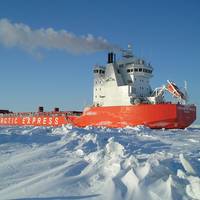Arctic Energy Exploration Efforts Heat Up

Oil and gas—and also mining—are the drivers today propelling Arctic maritime operations and the construction of new vessels able to operate in extreme latitudes. While the gas and oil resources can be recovered in the Arctic or far north and shipped to markets by sea or pipeline, the cost of doing must be balanced upon the global market price for those commodities. Ships and marine structures able to operate in the harsh conditions of the extreme latitudes require special designs and construction techniques.
Neste Oil Uses Veson Nautical IMOS Trading
Veson Nautical, the US-based developer of proven software solutions for the commercial maritime community, announced that Neste Oil Corporation has purchased Veson Nautical’s Integrated Maritime Operations System (IMOS) Trading Module for Neste’s Shipping Division. Veson Nautical IMOS Trading provides a solution for monitoring and managing physical and Forward Freight Agreement (FFA) positions and risk. Currently, Neste’s Shipping Division utilizes Veson Nautical’s IMOS Chartering, Operations and Financials modules to manage all commercial shipping activities for its 30-vessel fleet. Ports of call include the Baltic, the North Sea and the North Atlantic Region; the company transports about 40 million tons of crude oil, oil products and chemicals annually.
Telenor Signs Agreement with Neste Oil
Telenor Satellite Services, a subsidiary of Telenor of Norway, today announced that it has signed a three-year communication agreement with Neste Oil Corporation of Helsinki, Finland for maritime broadband services. Under the terms of the contract, Telenor will provide Sealink Ku-Band services onboard 11 tankers with all vessels scheduled to have Sealink service by August of this year. Sealink's Ku-Band service provides Neste Shipping with high-speed data communications coverage throughout Western Europe. Offering maritime broadband communications at speeds of up to 2 megabits per second, Telenor's Sealink service enables efficient and cost-effective 'at sea' communications for ship operations including Internet access, video conferencing, e-mails, faxes, and telephone calling.
Neste Oil Live on Veson Nautical’s IMOS
Veson Nautical, the US-based developer of maritime software solutions and services, announced that Neste Oil Corporation is fully operational on Veson’s Integrated Maritime Operations System (IMOS) to manage its fleet of 30 tankers. Veson’s IMOS is designed to enable Neste’s Shipping Division to operate its large tanker fleet more efficiently and profitably, from the onset of the voyage to the financial tie-out. Neste Shipping transports about 40 million tons of crude oil, oil products and chemicals annually; tonnage consists not only of crude oil, product and chemical tankers but also of two barge / pusher combinations and three tugboats. The operations are concentrated mainly on the Baltic, the North Sea and the North Atlantic region.
Veson Nautical’s IMOS Selected by Neste Oil
Veson Nautical, the US-based maritime software developer that delivers outstanding chartering, operations and accounting solutions to marine cargo transportation managers across the globe, announced that Neste Oil Corporation has licensed Veson’s Integrated Maritime Operations System (IMOS). Neste Oil, an independent northern European oil refining and marketing company will leverage IMOS in its Shipping Division for all activities related to the company’s fleet of tankers. Veson Nautical’s solution was selected from among seven other providers after Neste conducted a thorough analysis of needs and internal processes to ensure the new operating system would be able to handle all current and future requirements.







